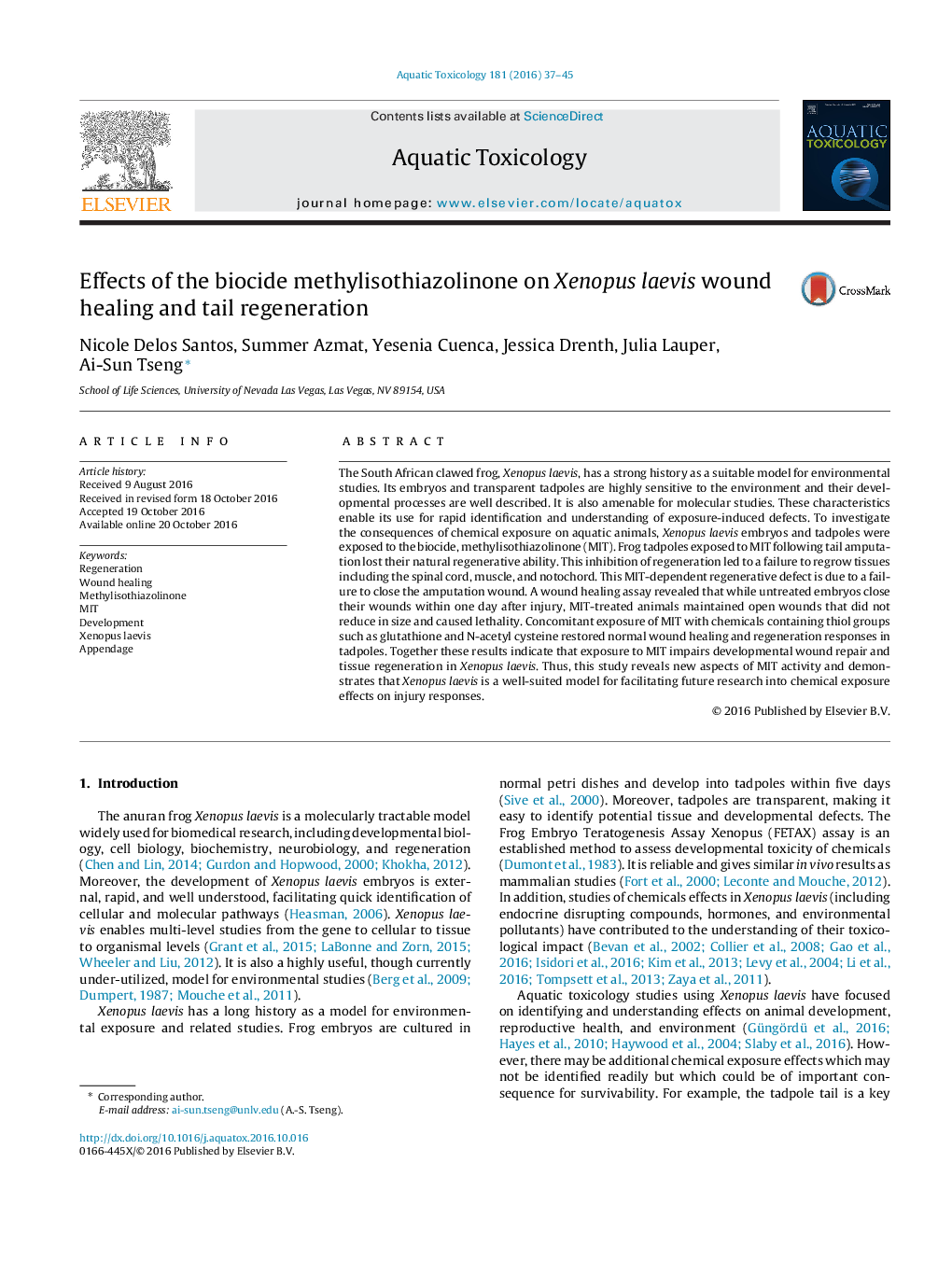| کد مقاله | کد نشریه | سال انتشار | مقاله انگلیسی | نسخه تمام متن |
|---|---|---|---|---|
| 6381778 | 1625924 | 2016 | 9 صفحه PDF | دانلود رایگان |
عنوان انگلیسی مقاله ISI
Effects of the biocide methylisothiazolinone on Xenopus laevis wound healing and tail regeneration
دانلود مقاله + سفارش ترجمه
دانلود مقاله ISI انگلیسی
رایگان برای ایرانیان
کلمات کلیدی
موضوعات مرتبط
علوم زیستی و بیوفناوری
علوم کشاورزی و بیولوژیک
علوم آبزیان
پیش نمایش صفحه اول مقاله

چکیده انگلیسی
The South African clawed frog, Xenopus laevis, has a strong history as a suitable model for environmental studies. Its embryos and transparent tadpoles are highly sensitive to the environment and their developmental processes are well described. It is also amenable for molecular studies. These characteristics enable its use for rapid identification and understanding of exposure-induced defects. To investigate the consequences of chemical exposure on aquatic animals, Xenopus laevis embryos and tadpoles were exposed to the biocide, methylisothiazolinone (MIT). Frog tadpoles exposed to MIT following tail amputation lost their natural regenerative ability. This inhibition of regeneration led to a failure to regrow tissues including the spinal cord, muscle, and notochord. This MIT-dependent regenerative defect is due to a failure to close the amputation wound. A wound healing assay revealed that while untreated embryos close their wounds within one day after injury, MIT-treated animals maintained open wounds that did not reduce in size and caused lethality. Concomitant exposure of MIT with chemicals containing thiol groups such as glutathione and N-acetyl cysteine restored normal wound healing and regeneration responses in tadpoles. Together these results indicate that exposure to MIT impairs developmental wound repair and tissue regeneration in Xenopus laevis. Thus, this study reveals new aspects of MIT activity and demonstrates that Xenopus laevis is a well-suited model for facilitating future research into chemical exposure effects on injury responses.
ناشر
Database: Elsevier - ScienceDirect (ساینس دایرکت)
Journal: Aquatic Toxicology - Volume 181, December 2016, Pages 37-45
Journal: Aquatic Toxicology - Volume 181, December 2016, Pages 37-45
نویسندگان
Nicole Delos Santos, Summer Azmat, Yesenia Cuenca, Jessica Drenth, Julia Lauper, Ai-Sun Tseng,